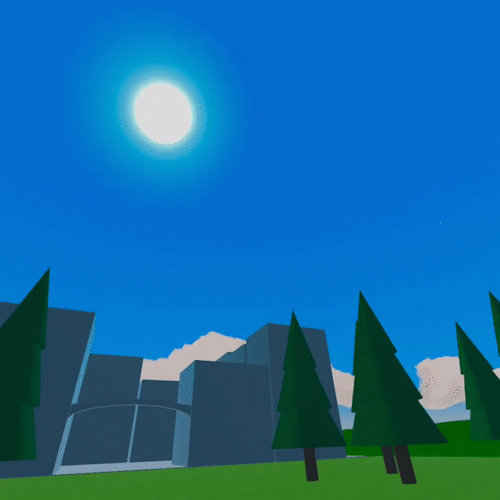Ambient Time Management in Virtual Reality
Project Background
I was brought on to a team working on an NSF-funded project that is exploring how social VR can improve remote meetings, focusing on new ways of augmenting social interactions that aren’t possible in physical contexts. The team was already looking into ways to manage conversation balance but we wanted to look into other area that we could harness the “superpowers” VR bestows upon its users.
Problem
In immersive environments such as virtual reality, time management is difficult as we lack many of the ambient cues we rely on in physical space. How could we go beyond just adding a clock and incorporate interesting environmental changes in order to help users keep their meetings on schedule?
Embodied Sketching
Currently, there are limited options for rapid prototyping in virtual reality. Prototyping in Unity can be a lengthy process that doesn’t allow for quick tweaks to the in headset environment for multi-person experiences. To solve this, we utilized an existing application, Rec Room’s, in-game tools for user-generated content creation. The tools allowed for both creating environmental assets while in-headset as well as provided limited visual scripting tools with their Circuits system, allowing for easy creation of the interactions and animations central to the concepts we brainstormed.
Concept 1: Time Barge
In this concept, the meeting occurs on a moving “barge” with each portion of the meeting occurring in a different environment. Movement gives a more pronounced sense of the passage of time and the changing of environment signals the beginning of a new part of the meeting.
First Iteration Time Barge Movement
Second Iteration Time Barge.
Ambient Lighting Changes
Concept 2: Lighting Changes
Its well documented that the human biological clock is in tune with light changes. In VR meetings with static environments, we are shut off from this. A moving light source in an immersive experience would help take advantage of our subconscious attunement to these changes and could be customized to match each “day” to different sections of a meeting.
Team Meeting in the Prototype Enviroment
Results
Utilizing this technique I was able to bring the entire team to a prototype environment much quicker than building the entire experience in Unity would have from scratch. This allowed our teams developers to understand the concept more intimately than they would have with by experiencing it immersed and allowed for a meaningful conversation about feasibility for our own environment based in custom Mozilla Hubs instance in which the research team would be running studies in.
Metadesign & Environmental Prototyping
Discussions with our developers and research teams lead us to focus on the Time Barge concept. This concept gave us a lot of interesting questions in relation to how the environment might be constructed. We decided our first step in exploring these ideas should be to conduct what Joshua McVeigh-Schultz terms a “dollhousing” exercise. This is an in VR bodystorming exercise where we utilize prefabricated models (in this case from Google Poly) in our custom Mozilla Hubs environment to collaborate on the layout.
We focused on questions of how would the environmental changes be communicated? What would their overall feel be? Would there be hard transitions between environments or would they bleed into each other?
Dollhousing Asset Stack
Using assets to collaborate on environmental layout.
Results
We found that signaling environmental transitions is important, This could come in the form of visual “gates” that could be viewed easily as approached such as two trees to pass between or a bridge crossing. It could also occur by bleeding elements of an upcoming environment into another.
Another interesting finding was the use of elevation was powerful. It would allow you to look back on the journey as you go and potentially see artifacts of the meeting throughout the landscape, strengthing the spatial memory connection.
Further Development
This project is ongoing and the work thus far has been included as part of a VR Design Methods paper submission to CHI 2021.
We are now in the process of working with researchers to design an experience for a lab protocol in which they will look at how our designs for ambient time management helps task completion in a VR meeting. I am currently prototyping a time barge with all the necessary tools for the study to be conducted.
Acknowledgments
This material is based upon work supported by the National Science Foundation under Grant #2007627 and #2007755.







